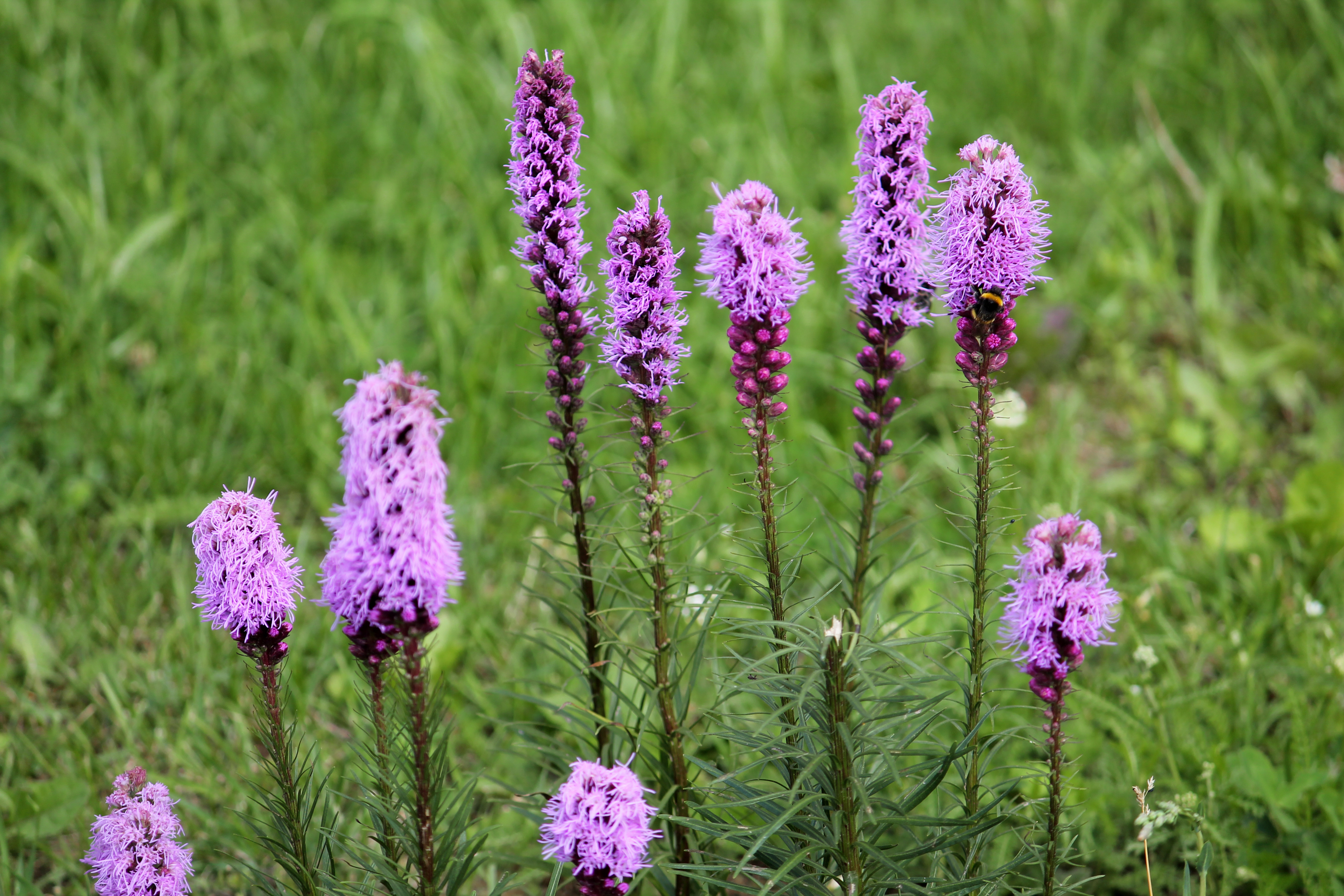Do you know your purpurea from your alba? What those Latin plant names mean
How much can you tell about a plant from its name? Well, many gardeners find their plants easier to grow than to pronounce their Latin names, which often sound like a load of gobbledegook.
Yet it’s not usually that difficult to make sense of some of the Latin, and once you get the hang of it, the names can actually help identify the colour, habit, scent, flower and leaf style of whichever particular gem you find at the garden centre.

Lavandula angustifolia ‘Hidcote’
For instance, if a specimen has the word ‘alba’ after it, then the flowers will be white. If it is labelled ‘citriodora’, it will be lemon-scented, while ‘angustifolia’ will give you narrow leaves.
All plants have two names. The first is the ‘genus’, which indicates which clan it comes from. For instance, all clematis come under the title ‘Clematis’, whatever their habit. This will usually be seen as just an initial in front of its second name.

You can tell a lot about a plant’s features from its Latin name
The second name, denoting the species, gives more of a descriptive clue. For instance, ‘C. macropetala’ tells you that the clematis you’ve chosen is many petalled, the translation of the Latin name.
If the two names are joined by an ‘x’, that signifies that the plant’s a hybrid – the result of interbreeding between two species of the same family.
The plant may also have a third name, although not a Latin one, to show it is a variety of that particular species. The name may be in honour of the person or nursery who introduced it, or it might be named after something outstanding about it, such as its vivid colour – for example, C. macropetala ‘Blue Bird’.

Kerria japonica
But just when you thought everything was clear, more vagaries come into play. Some hybrids only have the Latin name followed by the variety, such as ‘C. Alionushka’, while others show only the country of origin, such as ‘Kerria japonica’, originating from Japan.
While some Latin is difficult to follow, many plant names are quite user-friendly. It doesn’t take a genius, for instance, to work out that ‘Hydrangea serrata’ indicates that the hydrangea has serrated leaves.

Hydrangea serrata has serrated leaves
Other obvious common descriptions include ‘Cotoneaster microphyllus’ (small-leaved) and ‘Thymus vulgaris’, which means the common form of thyme.
The beauty of Latin terminology is that it allows gardeners to have a universal language throughout the world, and to be precise about the description of the plant.
And don’t worry about pronunciation – after all, you’re not after a diploma in Latin, you just want to find the right plant. But do bear these Latin names in mind, which may help you choose…
Colour guide

Echinacea purpurea, also known as the coneflower
Purpurea – purple; lutea – yellow; viridis – green; lactea – milky-white; sanguinea – blood red; argentea – silver; variegata – variegated.
Perfume hints

Lathyrus odorus, the sweet pea
Fragrantissima – most fragrant; odorus – fragrant; graveolens – unpleasant; foetida – foul-smelling; aromatica – aromatic; suaveolens – sweet-smelling.
Flower type

Liatris spicata has spiky flowers, as its Latin name denotes
Grandiflora – large; plena – double; campanulata – bell-shaped; florida/floribunda – free-flowering; spicata – spiky flowers.
Foliage details

Japanese Maple, Acer palmatum ‘Dissectum’
Dissectum – finely cut; hirsuta – hairy; macrophylla – large-leaved; nitida – shining; lactifolia – broad-leaved; palmatum – palm-like; sempervirens – evergreen.
Habit

The creeping buttercup’s Latin name is Ranunculus repens
Arborea – tree-like; columnaris – upright column; horizontalis – growing horizontally; magnifica – large; nana – dwarf; prostrata – growing flat to the ground; repens – creeping and rooting; fruticosa – shrubby.
The Press Association
Latest posts by The Press Association (see all)
- 5 surprising things you can clean in the washing machine - January 9, 2025
- Prince William posted a heartfelt birthday message to ‘most incredible wife and mother’ - January 9, 2025
- Birthday wishes for Catherine from royal family as the Princess of Wales turns 43 - January 9, 2025
- Maple Cinnamon Granola - January 8, 2025
- 8 things your feet can tell you about your health - January 8, 2025





















